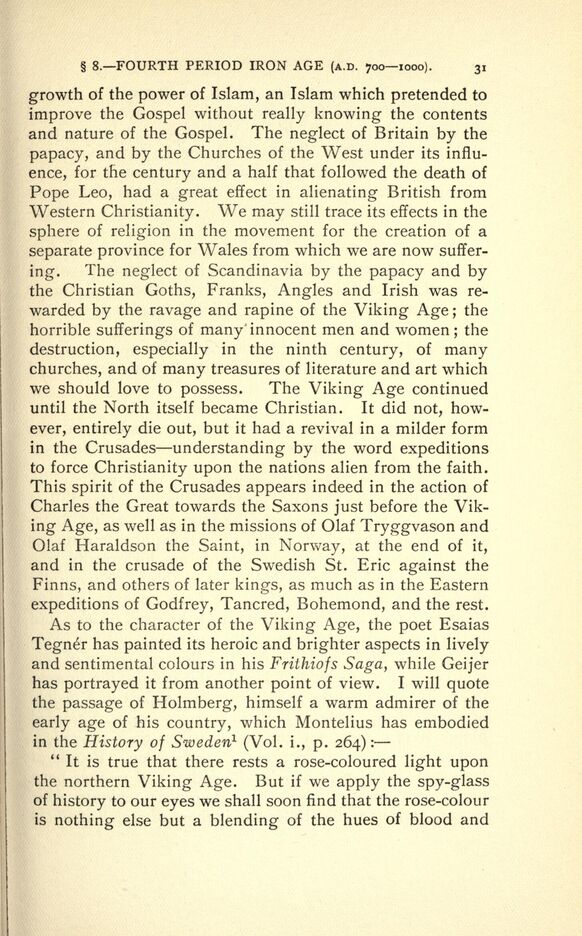
Full resolution (JPEG) - On this page / på denna sida - I. Introductory Lecture.—The Country and its Inhabitants in the Heathen Period up to 1000 A.D. - § 8. Fourth Period of the Iron Age

<< prev. page << föreg. sida << >> nästa sida >> next page >>
Below is the raw OCR text
from the above scanned image.
Do you see an error? Proofread the page now!
Här nedan syns maskintolkade texten från faksimilbilden ovan.
Ser du något fel? Korrekturläs sidan nu!
This page has never been proofread. / Denna sida har aldrig korrekturlästs.
8. FOURTH PERIOD IRON AGE (A.D. 7001000). 31
growth of the power of Islam, an Islam which pretended to
improve the Gospel without really knowing the contents
and nature of the Gospel. The neglect of Britain by the
papacy, and by the Churches of the West under its influ
ence, for the century and a half that followed the death of
Pope Leo, had a great effect in alienating British from
Western Christianity. We may still trace its effects in the
sphere of religion in the movement for the creation of a
separate province for Wales from which we are now suffer
ing. The neglect of Scandinavia by the papacy and by
the Christian Goths, Franks, Angles and Irish was re
warded by the ravage and rapine of the Viking Age; the
horrible sufferings of many innocent men and women; the
destruction, especially in the ninth century, of many
churches, and of many treasures of literature and art which
we should love to possess. The Viking Age continued
until the North itself became Christian. It did not, how
ever, entirely die out, but it had a revival in a milder form
in the Crusades understanding by the word expeditions
to force Christianity upon the nations alien from the faith.
This spirit of the Crusades appears indeed in the action of
Charles the Great towards the Saxons just before the Vik
ing Age, as well as in the missions of Olaf Tryggvason and
Olaf Haraldson the Saint, in Norway, at the end of it,
and in the crusade of the Swedish St. Eric against the
Finns, and others of later kings, as much as in the Eastern
expeditions of Godfrey, Tancred, Bohemond, and the rest.
As to the character of the Viking Age, the poet Esaias
Tegner has painted its heroic and brighter aspects in lively
and sentimental colours in his Frilhiofs Saga, while Geijer
has portrayed it from another point of view. I will quote
the passage of Holmberg, himself a warm admirer of the
early age of his country, which Montelius has embodied
in the History of Sweden1
(Vol. i., p. 264) :
44
It is true that there rests a rose-coloured light upon
the northern Viking Age. But if we apply the spy-glass
of history to our eyes we shall soon find that the rose-colour
is
nothing else but a blending of the hues of blood and
<< prev. page << föreg. sida << >> nästa sida >> next page >>